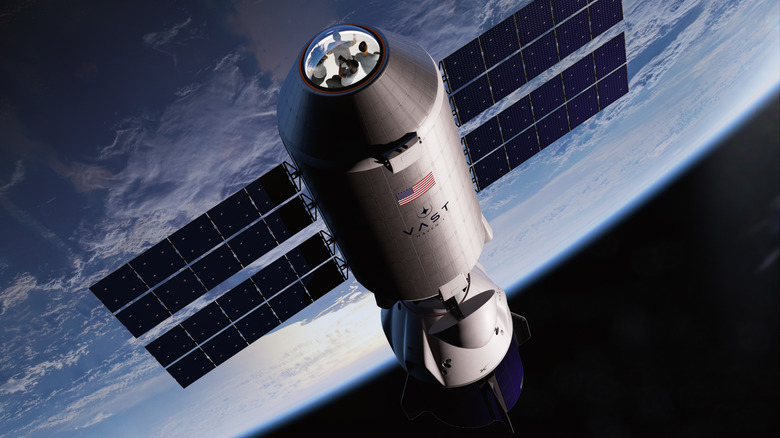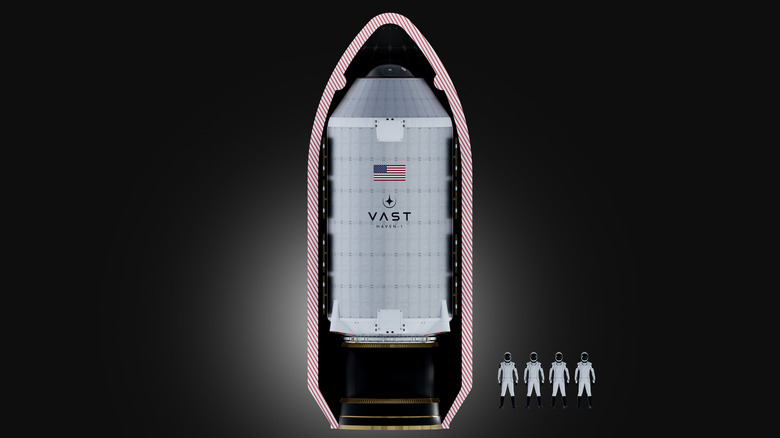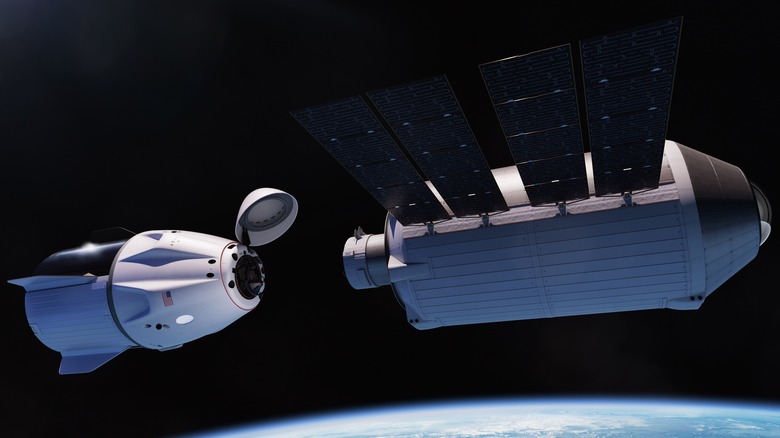This Audacious Plan For A Commercial Space Station Needs SpaceX's Help
With the announcement by Vast of two missions starting as early as 2025, it's one small step in space exploration, one giant leap in the collaboration between private space technology companies. That's because Vast, which was founded in 2021 and develops space habitation tech for long-term missions, will work directly with spacecraft manufacturer SpaceX to help get its privately-owned commercial space station into orbit.
Sixty years since the first human flew to space, only two space stations where astronauts can live and work long-term are currently in orbit: the International Space Station, and China's Tiangong Space Station. The addition of privately-funded and operated space stations floating above Earth will go a long way toward advancing space science and exploration. These stations could eventually serve as stations for spacecraft to launch further out into the solar system.
Vast looks to be the first private company to build long-term, independently-crewed habitats; starting with its Haven-1 module, which is planned to launch "no earlier than August 2025." If all goes to plan, additional modules will join Haven-1 in the future to create a 100-meter-long, commercially-owned space station.
Remarkably, Vast intends to create artificial gravity on its space station by spinning it and generating centripetal force. Haven-1 will be used by Vast to conduct the first ever spinning artificial gravity experiment on a commercial habitat. The company also plans a second mission to send a four-person crew to dock with Haven-1 and reside there for 30 days — using SpaceX to get there.
Working with SpaceX
Vast's first mission, Haven-1, will send the module into low-Earth orbit on a SpaceX Falcon 9 rocket. The partially reusable Falcon 9 has broken several space records, including the most-used American rocket, and is the only commercial rocket to ever launch humans into space.
Vast plans to quickly follow up this mission with its second, Vast-1, that will send its four-person crew to Haven-1 on a SpaceX Dragon spacecraft. Vast has also optioned a second human spaceflight mission to Haven-1 with SpaceX.
SpaceX will conduct training for the Vast crewmembers, including instruction on emergency preparedness, ingress and egress exercises for the spacesuits, and spacecraft used by the mission. This training will also include mission simulations, including docking and undocking between the Dragon and Haven-1. Vast is selling up to four seats on the mission, and the crew will potentially consist of private individuals or astronauts funded by government agencies.
The collaboration between both private companies on a manned space flight would be unprecedented. Assuming the missions are successful, this could ultimately change the landscape of Earth's orbit, populating it with privately-owned space stations where astronauts can live and work in artificial gravity.
"We are grateful to SpaceX for this exciting partnership that represents the first steps in Vast's long-term vision of launching much larger, artificial gravity space stations in Earth orbit and beyond," Vast CEO Jed McCaleb said in the company's announcement.
The future of space exploration
Founded in 2002, SpaceX has been a pivotal company in the push for commercial space exploration, developing cheaper, reusable spacecraft as well as increasing the overall number of flights to space. While private spaceflight companies like SpaceX, Blue Origin, and Virgin Galactic have been routinely operating missions to and from space for several years now, the alliance between two private companies serving different functions on a mission points toward the future of space exploration.
Similar to how international space agencies cooperate — with NASA astronauts riding on Russian space capsules, for example — Vast using SpaceX as transportation to and from orbit, allows the company to focus its energy (and budget) on developing the habitation tech needed for a more permanent commercial presence in space.
"A commercial rocket launching a commercial spacecraft with commercial astronauts to a commercial space station is the future of low-Earth orbit," stated Tom Ochinero, Senior Vice President of Commercial Business at SpaceX, in the announcement. "And with Vast we're taking another step toward making that future a reality."


